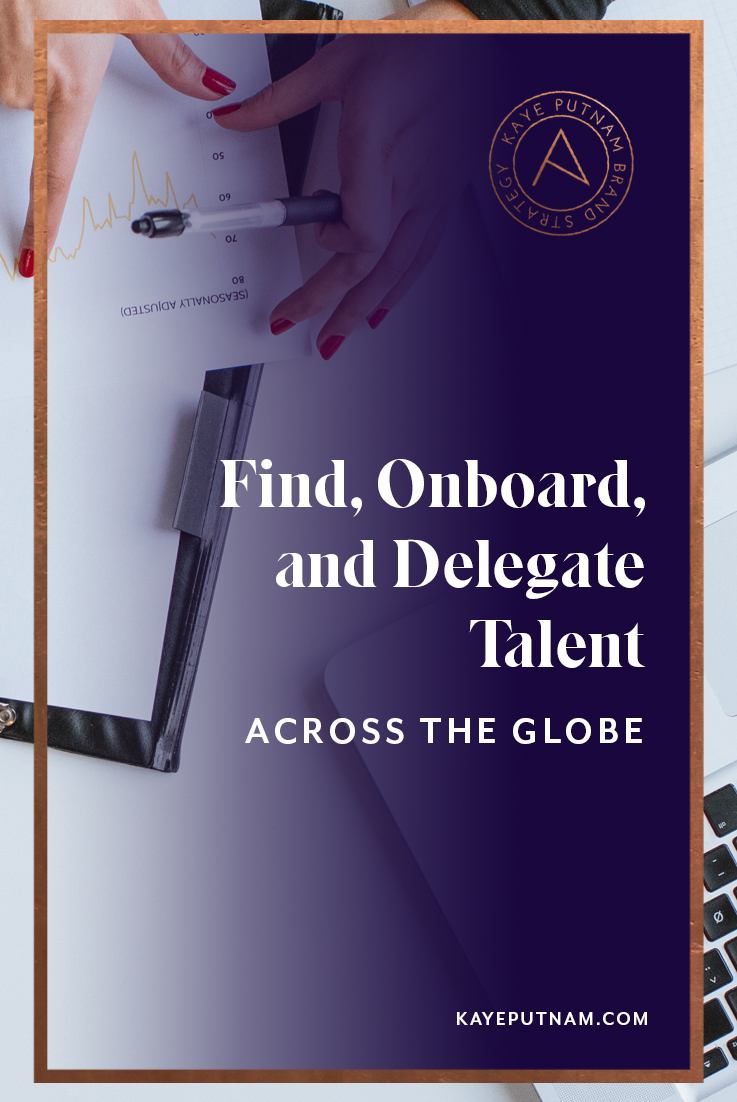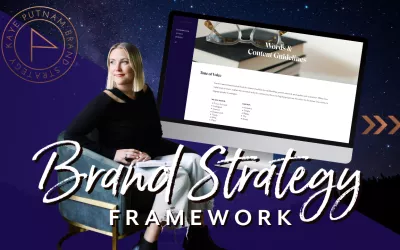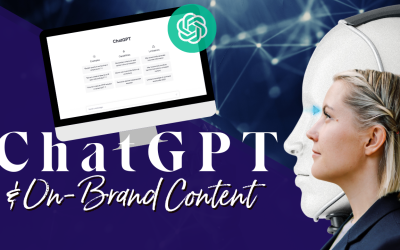Imagine being able find and tap into the *best* talent from ANYWHERE in the world to work on your business. Wouldn’t that be amazing?
Picture yourself reaching into every corner of the globe to scout out the *right* talent – VAs, writers, strategists, designers, programmers and more… all at the *right* price for you.
Pretty sweet scenario, right? (Wait. It gets better.)
Now imagine plugging them in to your business with little to no onboarding time – and with minimal involvement from you. (Whoa. Now THAT would be impactful.)
This is NOT a “too good to be true” scenario. It’s all possible, and I’m about to tell you how.
Read on for the deets! Or if you prefer to listen, hit that video link.
First, let’s look at why we (as entrepreneurs) often doubt that outsourcing is truly wise or possible…
At first, delegating seems like a great idea. It’s simple math, right? There are only so many hours in a day. And you’re smart, so you know that the most successful entrepreneurs spend most of those hours working squarely in their respective zones of genius.
So, you follow all the standard wisdom. You carefully assess all the tasks in your business. You identify the ones that can be delegated and outsourced. You take the time to locate talent that meets the right criteria for the tasks at hand, and you bravely send them your deposit.
Next, in our entrepreneurial dreams, the process looks like the scenario this article opens with. (Hire with ease! Onboard quickly! Get work back that is close to flawless! Move on to the next thing. Repeat.)
But in reality, we don’t usually achieve that utopia out of the gate. (Womp womp.)
Maybe we delegate some copywriting, but the work requires major edits – or a complete re-write.
Or we send a design project out to a pro who had great reviews, but the work delivered doesn’t look or feel anything like the brand.
Or maybe we delegate social media posting to a VA, but the posting times aren’t what we would have selected.
… Yes, most of us have had some negative experiences that seem to support counter-productive thoughts like:
“No one can do it as well as I can.”
… or the infamous:
“By the time I locate, onboard, train, and provide feedback – I could have just done it myself three times over.”
But, friends, I am here to tell you that those are very common – but very dangerous thoughts. If you don’t challenge and reject them – and find a better way – your business will not grow. You’ll stay where you are, playing small.
(Note: If you want to stay small, that’s cool! But if your desire is to scale, I want you to know this: You CAN do it. It is not always easy, but it is possible for you – and I’m here to help.)
The bottom line is this:
There is no need to run *your* business by yourself. There are better, faster ways to find the right people to work with – all while ensuring quality and on-brand messages.
Let’s dig in to how to make this happen for your brand.
Pssst… 📌 You can pin this article to reference later!

The inspiring book Superintelligence by Nick Bostrom (#nerdalert – it’s soooooo good! Put it on your list!) suggests that one of the main pathways to achieving unprecedented and exceptional results is to tap into “collective intelligence.”
This means finding a superior way to link minds together to achieve superior results. (Hello! I KNOW you want those!)
This is not the stuff of science fiction, I promise! 🤖 (Think about how successful corporations – with hundreds or thousands of employees – find ways to pool knowledge and extract the very best ideas for implementation… that’s collective intelligence in action. It happens every day in big business.)
But the concept isn’t only for large organizations. In fact, if you think about it… Smaller businesses have fewer brains to network, and should have the potential to be even more nimble, right?
I believe it’s time for small business owners to take a page out of the Superintelligence book (so to speak 😉 – even when we do not have traditional employees. I think it’s our time to tap into the hivemind concept and leverage talent from anywhere.
But how?
Well, here’s the juicy part: I have discovered the missing piece. It’s simple but it’s powerful.
The best way to ensure that the right talent can jump in and out of your business quickly and easily is to create high brand standards and document them.
Instead of starting from scratch with every new person you work with, you can create and document standards that can be shared with any contractor, anywhere in the world. BOOM.
Through trial and error with my own brand and in client work, I’ve found the most effective way to do this is a web-based Sourcebook. It’s easily accessed, easily updated, and can be used as a tool to demonstrate your expectations right down to the letter. (The Sourcebook is like a brand standards guide on steroids. 😉 Check mine out here.)
Need your own Sourcebook? Here’s your plan:
Step 1: Dig into the high-leverage work of creating systems and standards for your brand.
If you haven’t worked through this process yet, you’ll find more detailed guidance in my article: Managing Your Brand in Three Steps.
(The Cliff Notes: You’ll identify the systems at play in your brand, set standards for each sub-system, and then continually optimize them.)
Step 2: Document your brand.
To shorten the time it takes to plug someone new into your business, document your:
Brand foundation. These are your core ideas, who you serve, and the results you achieve through your work. This can also include where your business is headed.
Brand context. These are your differentiating factors and current environmental factors that play into your positioning in your industry or niche.
Brand character. This is a unique personality that your brand leverages and lives out loud. It’s how you sound, how you want to show up in the world, and the strong points of view held by your brand.
Brand purpose. This is your why; the impact that your business has on the stakeholders – internal and external.
Brand principles. These are your brand’s values; the beliefs that serve as pillars and checkpoints for your business.
Brand measures. These are the ways you define success and effectiveness.
Brand credibility. These are the factors that prospects, clients, and staff can look to that demonstrate your brand’s trusted and accomplished place in the market.
Brand enemies. (Incredibly helpful for new talent!) These are your “don’ts” – the words, tones, and statements to avoid… the positions we actively choose not to take.
Then, expand upon these foundational pieces, and get super-practical. Drill down to your:
Word choices. This is your tone, your vocabulary, your stories, your themes, and more.
Design elements. This is your font usage, colors, shapes, logos, patterns, etc.
Visibility standards. These are schedules, workflows, tools, etc. for your brand’s visibility.
The goal is to document all of the standards someone needs to live up to in order to *create* for your business while staying ON BRAND.
The beauty of this web-based setup is that a smart contractor can *quickly* view your brand standards from *anywhere* in the world – and you can shorten the time it takes to acclimate new talent.
It’s all coming together now, isn’t it? That “too good to be true” scenario from the beginning of this article? Totally doable – when you have crystal clarity and a tool with which to communicate your expectations and standards.
If you need help with this, my program, The Clarity Code, is designed specifically for this process.
Through the program, we bring each brand through a documentation and definition process. We set up all of the standards and outline a web-based standards access point – so people can jump in and out of your business as often as you need them.
The results? An effective and efficient system to keep your business on-brand and growing! Learn more here.




